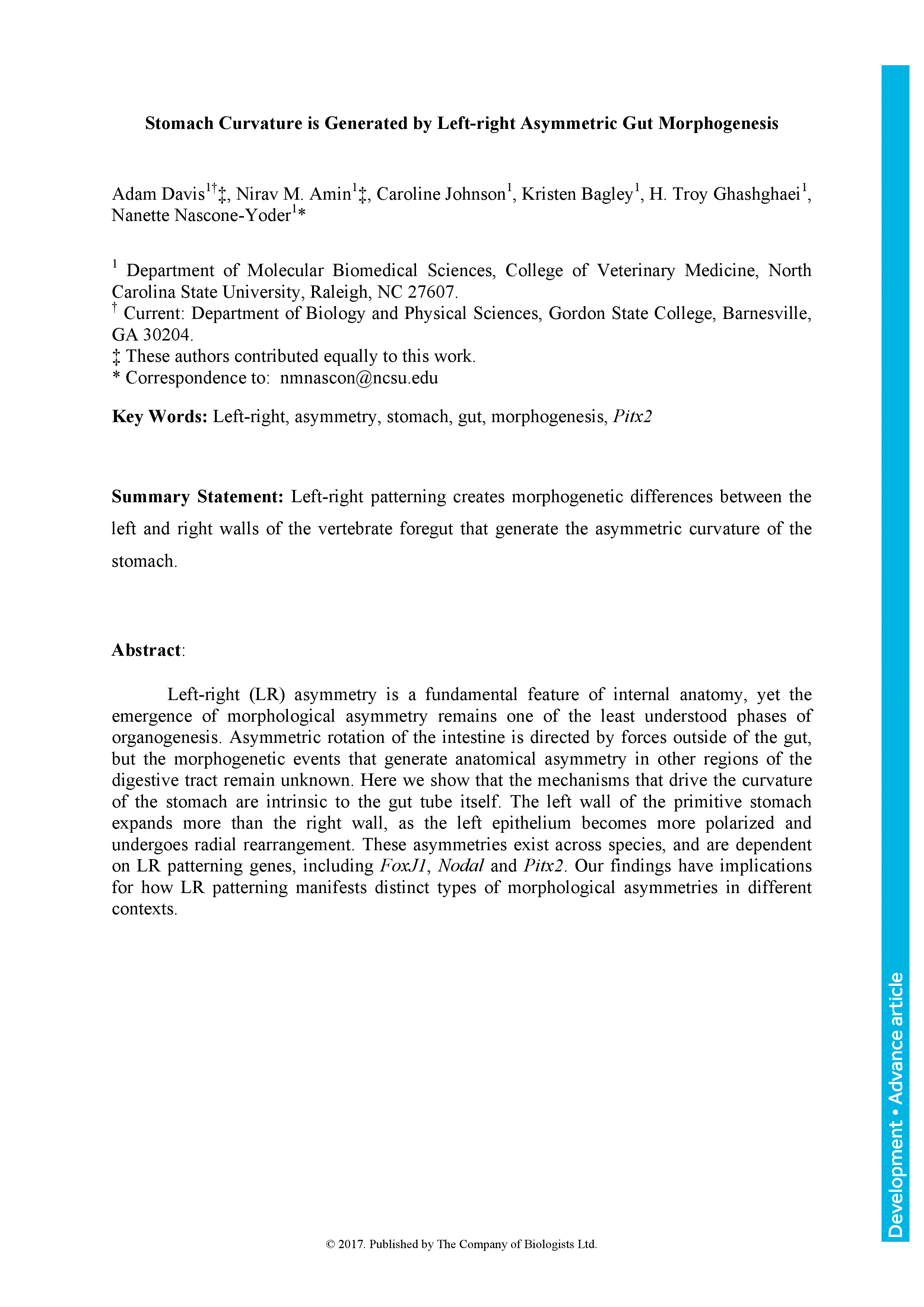Left-right (LR) asymmetry is a fundamental feature of internal anatomy, yet the emergence of morphological asymmetry remains one of the least understood phases of organogenesis. Asymmetric rotation of the intestine is directed by forces outside of the gut, but the morphogenetic events that generate anatomical asymmetry in other regions of the digestive tract remain unknown. Here we show that the mechanisms that drive the curvature of the stomach are intrinsic to the gut tube itself. The left wall of the primitive stomach expands more than the right wall, as the left epithelium becomes more polarized and undergoes radial rearrangement. These asymmetries exist across species, and are dependent on LR patterning genes, including FoxJ1, Nodal and Pitx2. Our findings have implications for how LR patterning manifests distinct types of morphological asymmetries in different contexts.
Stomach curvature is generated by left-right asymmetric gut morphogenesis
Department of Biology and Physical Sciences, Gordon State College, Barnesville, GA 30204, USA
These authors contributed equally to this work.
Currently Viewing Accepted Manuscript - Newer Version Available
Adam Davis, Nirav M. Amin, Caroline Johnson, Kristen Bagley, H. Troy Ghashghaei, Nanette Nascone-Yoder; Stomach curvature is generated by left-right asymmetric gut morphogenesis. Development 2017; dev.143701. doi: https://doi.org/10.1242/dev.143701
Download citation file:
Advertisement
Call for papers: Uncovering Developmental Diversity

Development invites you to submit your latest research to our upcoming special issue: Uncovering Developmental Diversity. This issue will be coordinated by our academic Editor Cassandra Extavour (Harvard University, USA) alongside two Guest Editors: Liam Dolan (Gregor Mendel Institute of Molecular Plant Biology, Austria) and Karen Sears (University of California Los Angeles, USA).
Choose Development in 2024

In this Editorial, Development Editor-in-Chief James Briscoe and Executive Editor Katherine Brown explain how you support your community by publishing in Development and how the journal champions serious science, community connections and progressive publishing.
Journal Meeting: From Stem Cells to Human Development

Register now for the 2024 Development Journal Meeting From Stem Cells to Human Development. Early-bird registration deadline: 3 May. Abstract submission deadline: 21 June.
Pluripotency of a founding field: rebranding developmental biology

This collaborative Perspective, the result of a workshop held in 2023, proposes a set of community actions to increase the visibility of the developmental biology field. The authors make recommendations for new funding streams, frameworks for collaborations and mechanisms by which members of the community can promote themselves and their research.
Read & Publish Open Access publishing: what authors say

We have had great feedback from authors who have benefitted from our Read & Publish agreement with their institution and have been able to publish Open Access with us without paying an APC. Read what they had to say.



